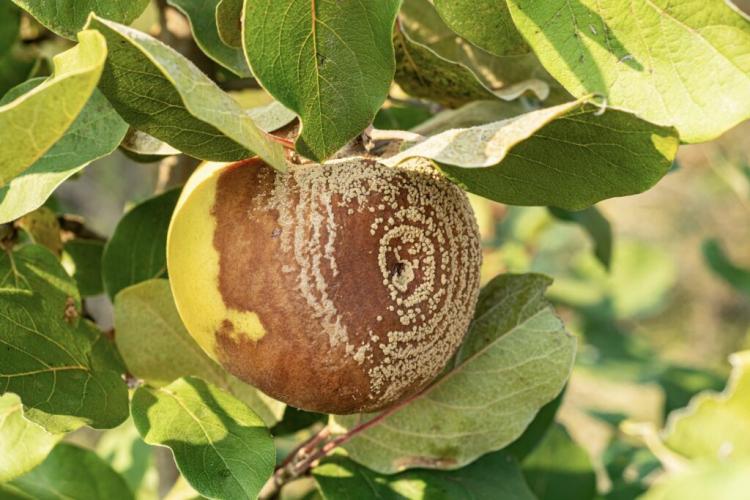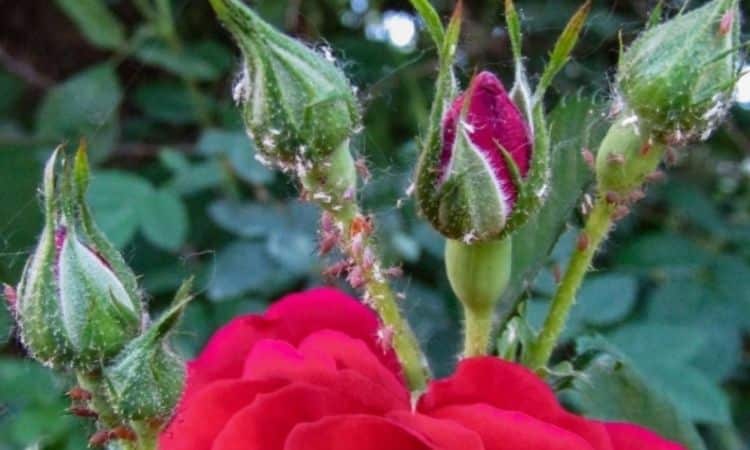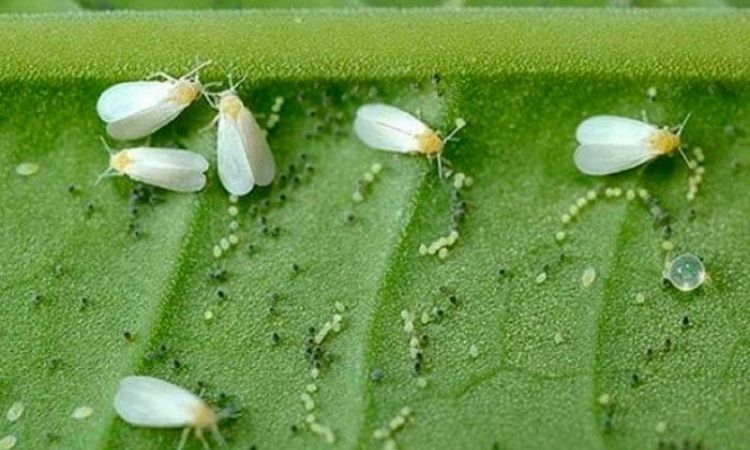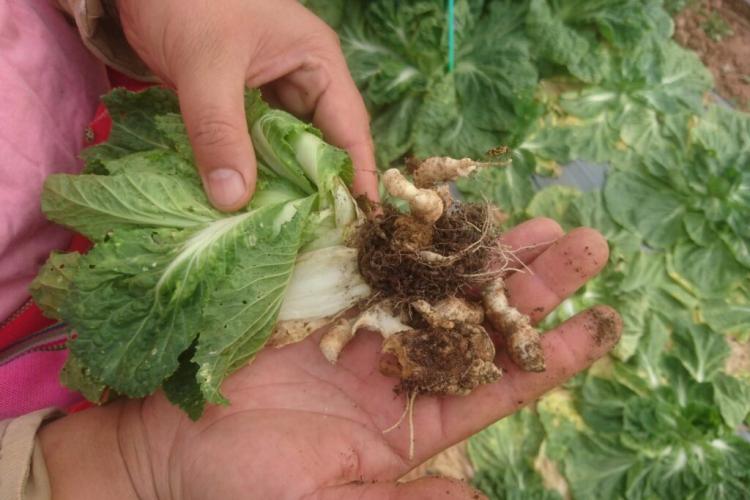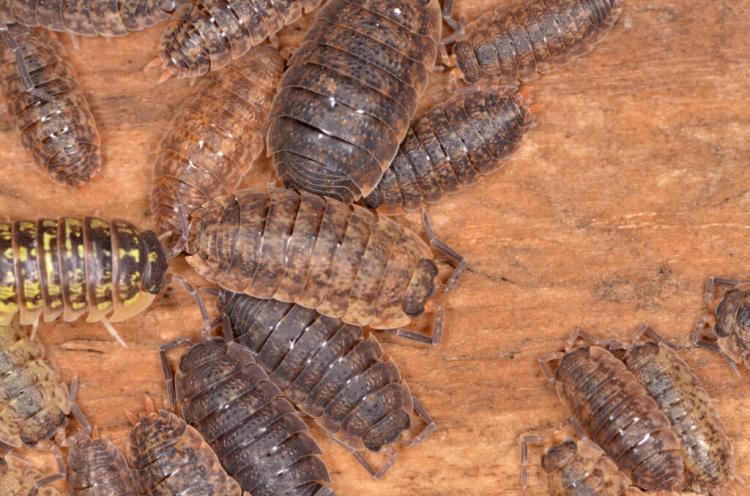Monilia (Peak Drought): Recognize, Prevent And Combat
Here you can find out everything about Monilia: How to recognize the damage, prevent and fight the fungus. Information on home remedies and pesticides.
How to recognize an infestation with monilia / peak drought
Table of Contents
Monilia is a very unwelcome visitor to the orchard. The pathogen can not only cause great damage, but it can also attack a large number of fruit trees. These include the sour cherry, sweet cherry, quince, plum, apple, apricot, pear, and peach. Many sour cherry varieties in particular are extremely susceptible to the pathogen, whereas the disease on apple and pear trees is rare.
The dreaded peak drought caused by Monilia pathogens can appear shortly after flowering. First, the flowers and leaves at the branch tips wither, but do not fall to the ground and hang dry on the branches. After a short time, the shoot tips of the affected branches dry up and die off. Sometimes yellowish-gray spore beds from the Monilia fungus can also be seen. If the infestation is severe over several years, the entire treetop can become bald.
You might so like: Dried Fruit Moth: Successfully Combat And Recognize
The same pathogen is also responsible for Monilia fruit rot. However, the fruits can only be attacked if the plant has already been damaged – for example, when a codling moth is eating. At first, the fruits only have a small brown spot on the damaged fruit skin, but after a very short time, the fruits rot completely and form ring-shaped molds. This can result in fruit mummies that get stuck in the fruit tree or the rotten fruits fall to the ground.
The Monilia harmful fungus
Strictly speaking, it is not just one fungus that is responsible for the peak drought. The unpleasant fungus can either be Monilia fructigena, Monilia laxa, or, in the case of quinces, Monillia inhartiana. For the hobby gardener it doesn’t matter which mushroom representative it really is. For the peak drought to break out, Monilia has to infect the affected fruit tree through the open flowers. Especially in cool and wet weather during the flowering period, fruit trees are increasingly infected by harmful fungi.
From the flower, Monilia then grows into the branch tips. There the water supply for the shoot tips is interrupted and the characteristic parched tips arise. Insects, wind, and rain diligently help spread the fungal spores. Exactly the fungal spores that triggered the peak drought are also able to trigger Monilia fruit rot. Even the tiniest mechanical damage in the fruit peel is sufficient and the spores of Monilia can quickly grow into the apple or cherry.
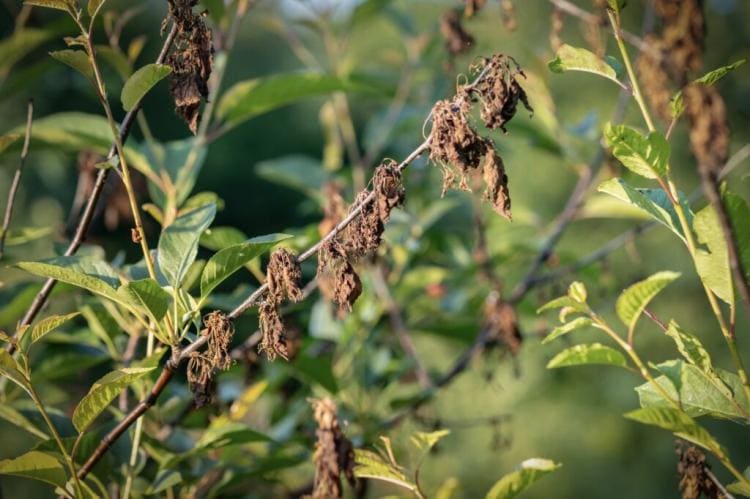
Prevent Monilia
As is often the case, the best preventive measure against Monilia is to choose the variety. For example, the susceptible sour cherry variety ‘Morelle’ can be replaced with the more resistant varieties ‘Morellenfeuer’ or ‘Gerema’. Most of the other types of fruit are also resistant. It is best to find out more directly from your local specialist dealer. It also always makes sense to design the canopy of fruit trees in such a way that a lot of air can circulate between the branches and moisture dries off quickly.
You might so like: Dwarf Fruit Trees: Grow Patio Trees In Your Own Garden
Unfortunately, through cuts, fungi penetrate the plant tissue particularly well. Larger wounds, for example, caused by removing an old branch, should be closed with tree balm. In general, cutting should only be carried out in dry weather. In addition, injecting biological tonics such as horsetail or algae preparations can prevent peak drought from occurring. The preparation does not work directly against the Monilia pathogen but strengthens the general defenses of the fruit trees through an ideal supply of nutrients.
Fight Monilia
All diseased branches should be cut back deep into the healthy wood immediately and destroyed. The fungus has often penetrated much further into the wood and therefore should be cut 20 cm deep into the healthy wood. If infested after flowering, Monilia fungi often trigger fruit rot with the typical brown-gray fungal lawn.
The infected fruits later dry up and become so-called fruit mummies, in which spores of the fungus hibernate on the tree or the ground and spread from there again in the next year. Here it is particularly important to collect the diseased fruits, otherwise, healthy fruits will be infected. Under no circumstances should they be thrown on the compost, because there the fungus can still multiply its spores wonderfully.
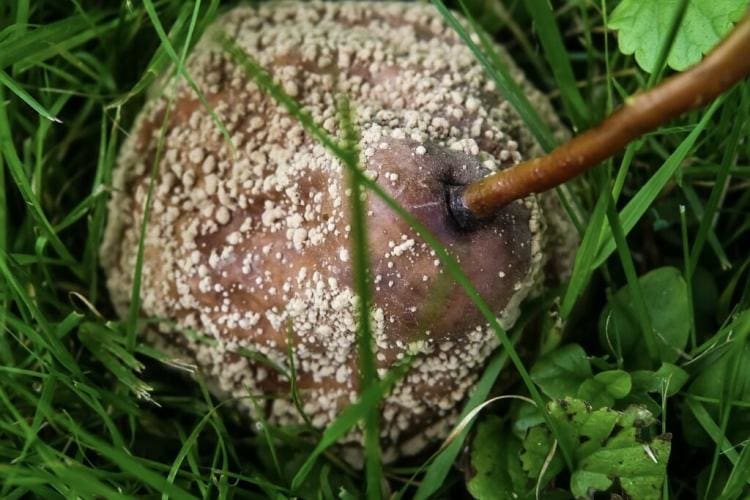
The tip drought can only be combated before the outbreak if the pathogen has not yet penetrated the flowers into the tip of the branch. Treatment should be done during the flowering period, this will be most effective. So if damp and cool weather announces itself, an infestation is particularly likely. If you then want to protect your fruit trees effectively, only chemistry will help.
You might so like: Mealybugs: Detect, Prevent And Control
However, before this is used, all preventive measures should be exhausted. Copper agents are suitable as a biologically usable fungicide. In an emergency, these can also be used after the visible infestation. The first spray occurs when the first flowers open and the second in full bloom. The third spray is not always necessary and should be carried out at the end of flowering.
In addition to the Monilia fungus, the fungal pathogen Phytophthora infestans is also feared by gardeners. We explain how to recognize and fight the fungus.
